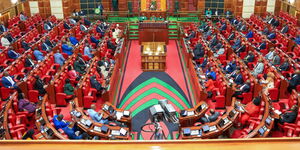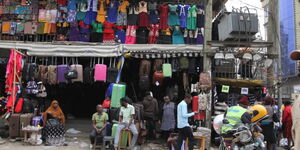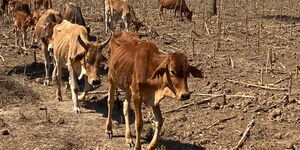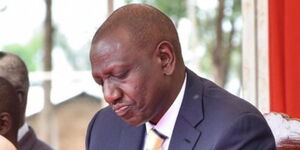Kenya is set to become East Africa’s largest economy, knocking Ethiopia off the top spot according to the latest International Monetary Fund (IMF) outlook.
As per IMF, Kenya’s Gross Domestic Product (GDP) will be $132 billion (Ksh 17T) in 2025, higher than Ethiopia’s $117 billion. This marks a rise from $121 billion (Ksh 15.6T) in the past year with Ethiopia recording a steep drop from $143 billion.
The latest comes after the Ethiopian Birr was devalued, while the Kenyan shilling contrastingly became the world’s best-performing currency.
After tightly controlling the value of the birr for half a century, Ethiopia liberalised the exchange rate system in July. The currency then depreciated by more than 55 per cent against the dollar. That enabled the Horn of Africa nation to clinch a $3.4 billion loan from the IMF and $16.6 billion from the World Bank. It also opened the door to talks with creditors on restructuring at least half of its $28.9 billion in external debt.
While this happened, Kenya’s currency gained around 21 per cent against the greenback and was further bolstered when Kenya sold a $1.5 billion (Ksh 194.2B) bond in February, allowing it to increase its gross reserves.
Additionally, higher diaspora remittances and export receipts over the past year also contributed to a stronger overall GDP.
Kenyans living abroad sent home a historic high of Ksh 651.7 billion ($4.94 billion) in 2024. This marked an 18 per cent increase from the Ksh 543.3 billion received in 2023. December 2024 alone saw remittances peak at $445.4 million (Ksh 57.6B), the highest monthly inflow on record. The United States remained the leading source, accounting for 51 per cent of total remittances.
Meanwhile, Kenya's merchandise exports reached an all-time high of USD 8.246 billion (Ksh 1T) in 2024, reflecting robust growth in key sectors such as agriculture and manufacturing. Monthly export performance varied, with July 2024 recording the highest monthly exports at USD 747.4 million (Ksh 96.7B).
The projected growth comes despite protests surrounding the contentious Finance Bill 2024, which led to the economy taking a hit due to failed tax targets. Consequently, the government was forced to backtrack, and its new plans made it difficult to meet targets under a four-year $3.6 billion (Ksh 466.2B) IMF program. It had to prematurely terminate the program, forgoing about $850 million (Ksh 110B) and is in talks for a new one.
On a global perspective, Kenya’s projected growth comes with a caveat, with a global trade war on the horizon. Also, the IMF lowered the global growth forecast from 3.3 per cent to 2.8 per cent.
The IMF said higher US tariffs are expected to trigger a demand shock among America’s trading partners, hitting output and prices. Sub-Saharan Africa’s gross domestic product is expected to rise 3.8 per cent this year, the slowest pace since the Covid-19 pandemic of 2020 and about 0.4 percentage points lower than the previous forecast.












